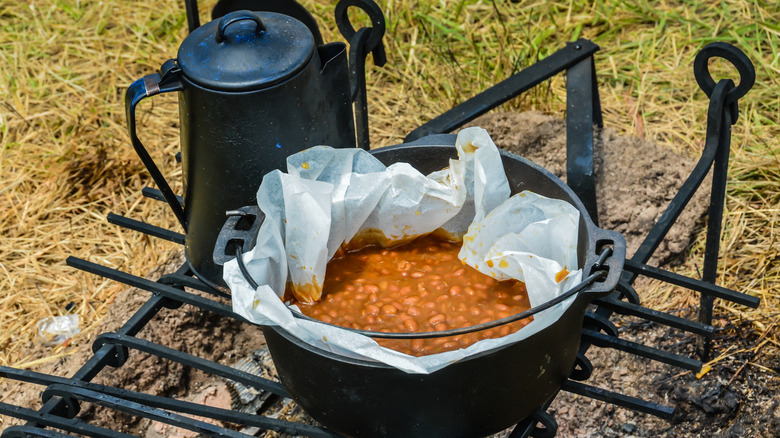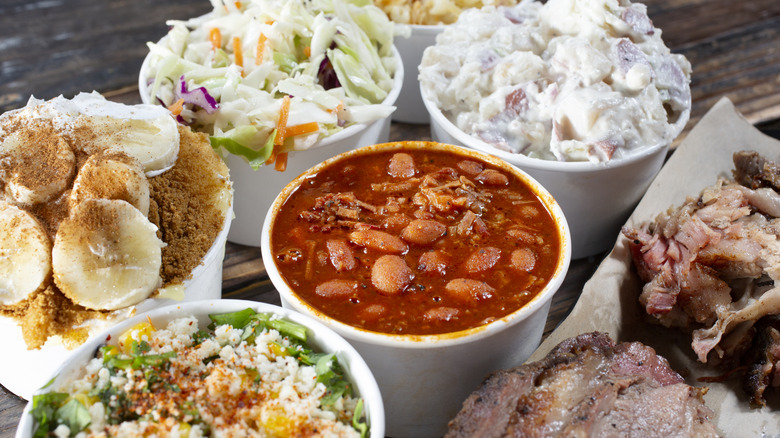Boston Baked Beans' Key Ingredient Makes Them So Rich, Sweet, And Delicious
Whether served as a side dish or enjoyed purely on their own, Boston baked beans are an all-time favorite combo of savory with just the right amount of sweet. What makes the Boston baked bean unique and oh-so-delightful is the addition of a heavy dose of molasses.
In fact, the reason Boston is called Beantown today is because the New England city has a long history with baked beans dating back to even before the USA was its own country. Some historians trace the origins of the dish to indigenous people of New England — others to a variation of an English bean-and-bacon stew from the Middle Ages. But what is certain is that baked beans were a beloved dish for the 17th-century Puritans in New England, who modified the recipe to suit local ingredients and tastes.
One of these local ingredients was molasses, introduced to New England in the mid-18th century as one of the goods shipped north, as Boston's role in the triangular trade, the trading of enslaved people, expanded. Molasses was used to make rum — the thick syrup was made by enslaved people in the Caribbean and then shipped up North where it was an easy addition to the beans the locals already ate.
This inexpensive sweetener created the rich, sweet depth now considered essential to the beloved baked beans. From there, the renown of Boston baked beans grew, thanks to advancements in bean canning that happened in Boston itself, and, by the late 19th century, Boston had a baseball team called the Beaneaters. In fact, Massachusetts even declared the navy bean (of baked beans) its official state bean in 1993. Today, a good traditional Boston baked beans recipe stirs this legacy into the pot: think long, slow baking with plenty of molasses, mustard, and onion until the beans develop a rich, savory sweetness.
Ways to enjoy your Boston baked beans
If you're making your own Boston baked beans, molasses is vital for that subtly smoky taste. Molasses contains sugar and calcium, so it keeps beans firm even after long hours of cooking – one reason baked beans are best prepared slowly, either in the oven or in a slow cooker. While many swear by homemade baked beans, many of us turn to canned for convenience. Luckily, you can upgrade your canned baked beans easily by adding smoky bacon, sausage, or grilled tofu for protein, or add a dash of Worcestershire sauce for a tangy boost.
And whether homemade or canned, one of the boons of baked beans is that they can be served in countless ways. In the U.S., baked beans are a classic barbecue side — they're equally at home with hot dogs, cornbread, or with a heavy helping of potato salad. Think of serving them with slathered onto a baked potato, or with a side of macaroni and cheese if you want to double down on comfort. Even simple sides like an iceberg lettuce salad, roasted vegetables, or deviled eggs balance the molasses-y richness of the beans.
You can also step outside the barbecue mindset and go full New England by serving your baked beans with dense brown bread, or embrace an old British favorite by piling them on buttered toast or serving them with fried eggs, sausage, and grilled tomatoes à la a full English breakfast. Interestingly, baked beans may even be an aphrodisiac, so maybe think of adding them to the menu for your next date night!


